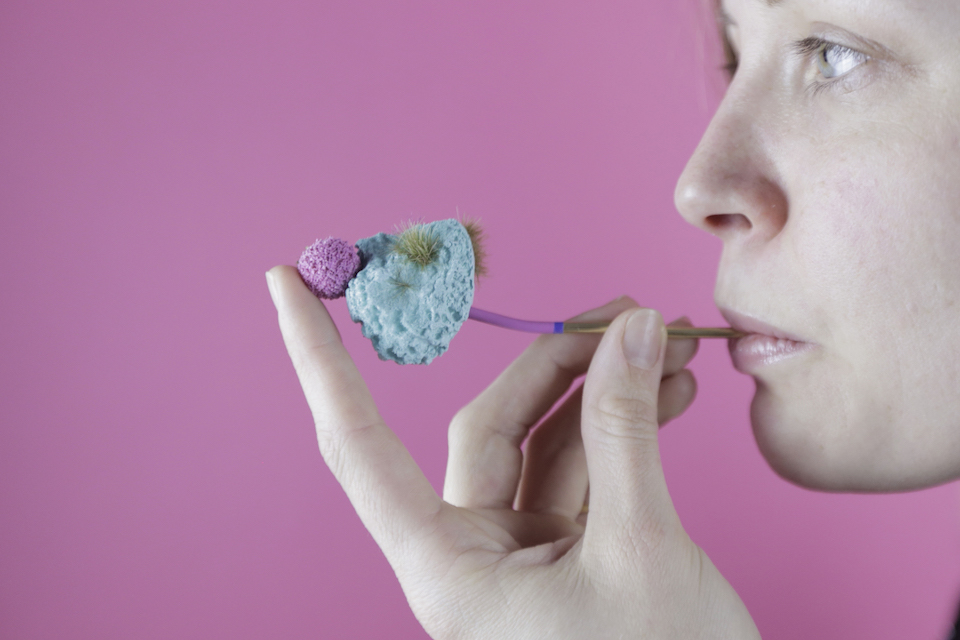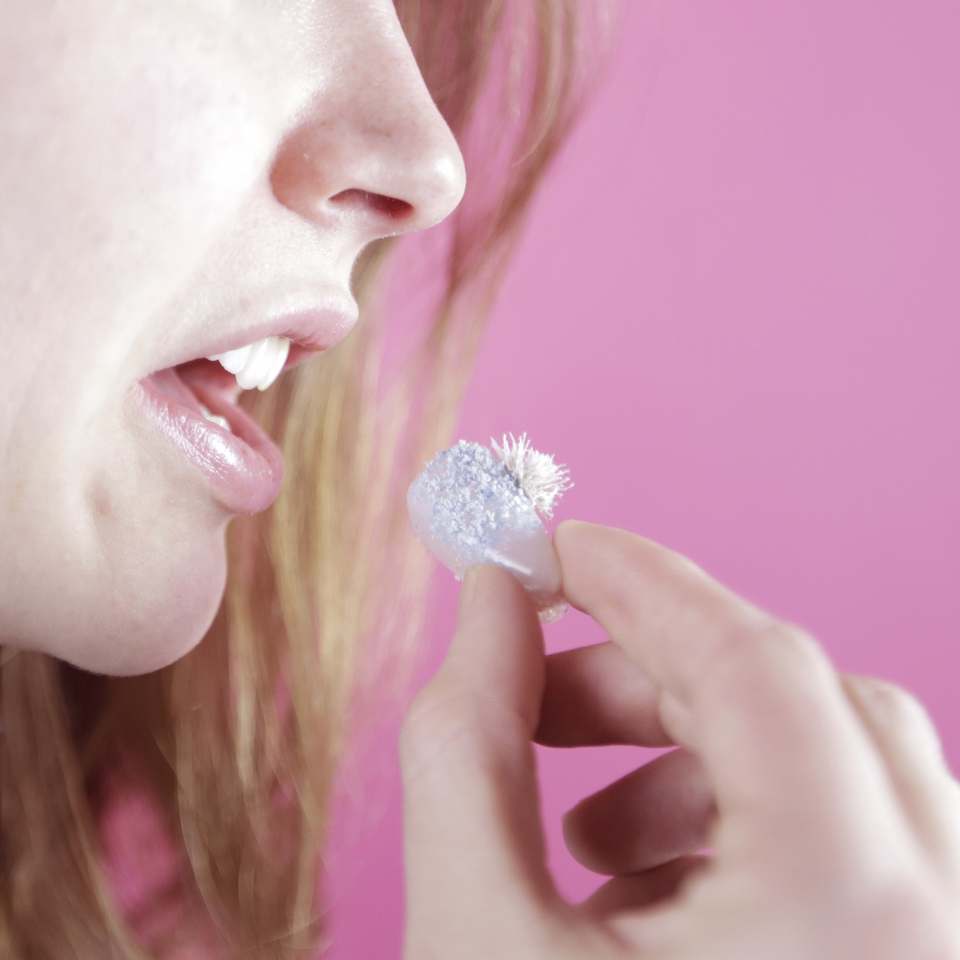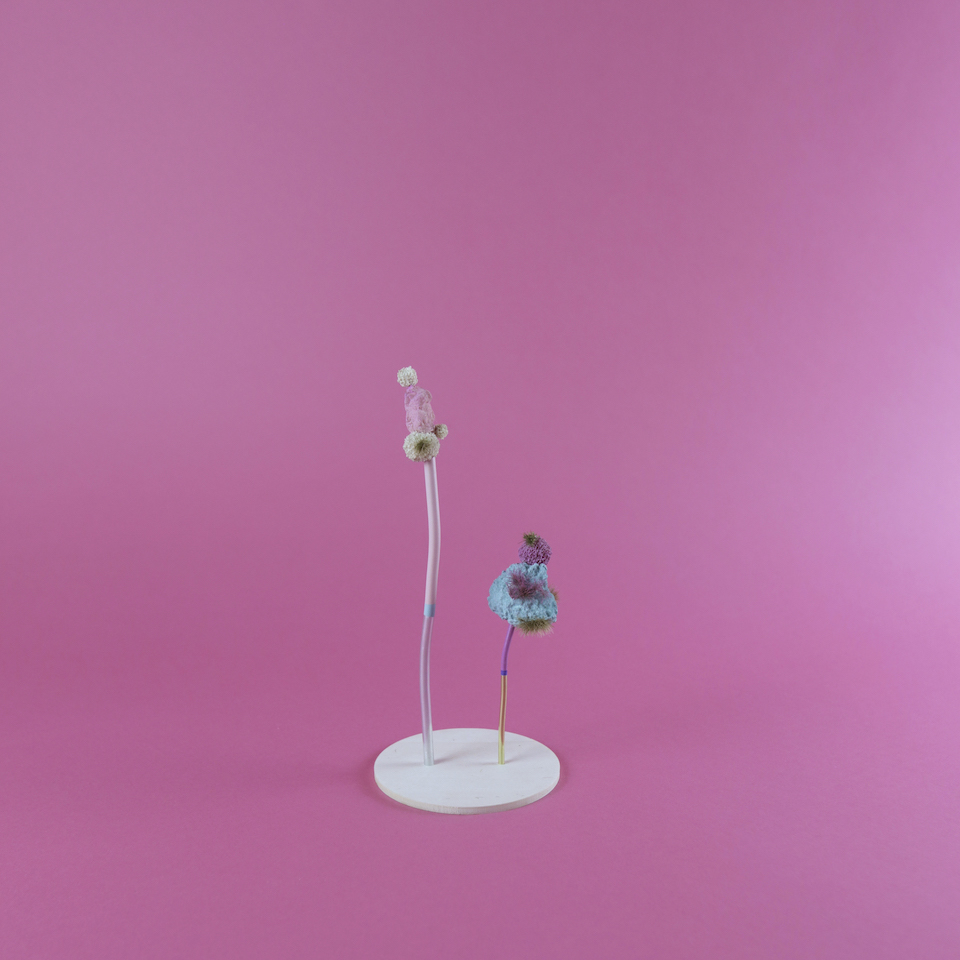SENSITIVE SCIENCE
fungus inhale vaccination

Céline Park’s conceptual Fungus Inhale Vaccination project imagines impregnating the fungi with weakened viruses, allowing its spores to carry vaccines into the bloodstream through the lungs using an inhaler.
The weakened virus would be attached to the fungal spores – the microscopic particles that allow the fungi to reproduce when they detach from the parent organism.
To demonstrate her ideas, the designer created a series of fantastical coloured inhalers. The fungi are attached to the ends of pipes, which contain filters to catch unwanted particles as well as providing mouthpieces.
What is your up bring? Where have you lived? How old are you? How does your international background benefits your knowledge in design?
I was born in Seoul, South Korea and moved to France when I was 14. I lived in Vancouver, Canada, NYC, USA, then moved back to Seoul for a couple of years and I finally settled in London to go to grad school. Now I’m 29. I remember saying that I wanted to become a designer or an artist when I was 3. Drawing and making creative artwork has been an utopian world since then. I studied Art and Design throughout my life. I would say that it was almost the only thing I was passionate about. Although my knowledge of design is will never be enough for me, I am always craving to create more creative things.
How did you become interested in the Health industry to the point of developing this project?
My father is an eye doctor, I grew up seeing lots of eye surgery videos. I always wanted to connect design to science. I was lucky taking lessons from Anthony Dunne who used to be the head of the programme of the study I do, Design Interactions at Royal College of Art. He encouraged me to do a synthetic biology project.
How does the fungus inhale vaccination work?
Vaccinations can be inhaled when it is attenuated in fungus. Our fine structure of lung is one of the most well-developed part inside our body. Therefore, it can efficiently transport the drug when we attenuate the non-drug magnetic polarities: we can transport it without the pain. Today, the medical community is using multiple types of inhalation medicines for the asthmatic patients. Many scientists are constantly trying to innovate, by inhaling insulin instead of hypodermically injecting inhalation every hour. Besides the fact that we can gain better immunity system with inhale vaccination, another benefit of having it is that it can easily transmit to surrounding people so they can easily get herd immunity as well (just like flu or pneumonia). Mould spores are very easy to be transported to our lung through respiratory organs. It can get easily absorbed from alveolar-capillary, then it will pass through the heart and finally transported to the circulating system of the entire body.
Why is it better than today’s regular vaccination?
First of all, there is nothing like inhalable vaccine delivery methods that has been yet discovered.
Secondly, it is because fungus has so much potential that it works incredibly better than regular inhalable vaccine. For example, fungus has ability to contain as many vaccine as we want in a small amount (of fungus). Also, it is easier to transport and spread out in our body through inhalation, when the attenuated vaccine is absorbed in fungus.
Each strains of fungus has its own specific preferential organ. Therefore, we can easily transport vaccine to target an organ like the lung or bronchus. Moreover, inhalation vaccine can easily achieve herd immunity like many other air-borne fungal infections.
What type of fungus do you use? What are the misconceptions people have about fungi? Do they present any risk for the patient?
Fungus like cryptococcosis, coccidioidomycosis, histoplasmosis, pneumocystis pneumonia can cause fatal infection to HIV/AIDS patients, as they have compromised immune system. However, it will not cause any problem for the regular people even though they get infected. Moreover, if regular people get infected, its strain is quickly responsive to the anti fungal. Also, there are advantages of some fungus for pneumocystis: the infection occurs optionally only on alveolar corporate, so we can choose a particular part to efficiently transfer the vaccine. Therefore, I have tried to use fungus for the carrier of the fungus inhalable viral or bacterial vaccine.
What challenges will medicine face in the near future and how do you imagine we could tackle some of them?
Lots of scientists are now facing the limit of creating more innovative medicine as most of the research we need to survive has been discovered. This issue will become more serious, and scientists might research it for their papers for their degrees, and not to make an advanced step in the medicine community (which is happening even now).
What role will design have in this future?
I think designers have lots of creativity but have less knowledge in most of fields like science, politics, etc.
If designers get more chances to collaborate with scientists, politicians.. I think we, designers, might be able to proceed more advanced solutions or progress in each field with our open-minded creativities.
What does the future hold for you? Any areas you would want to explore?
I’m currently focused on the subject, freedom, and I’m trying to find out how I can explore it through playwrights, choreography, and synthetic biology.
Lydia Janis Caldana
www.celinepark.co.uk
Lydia Janis Caldana is a trend forecaster with a creative background and both eyes on the future. Amazed by the opportunities new technologies bring at an exponential rate, she uses her abilities to predict movements and change to help companies, governments and disrupters be in charge of a more sustainable, inspiring and tech-solutioned world. Lydia keeps a blog about technology, is the LatAm correspondent for The Future Is Already Here, a think tank for a better world, and co-curates Ello’s official community about tech, culture and innovation, Ello Future.





